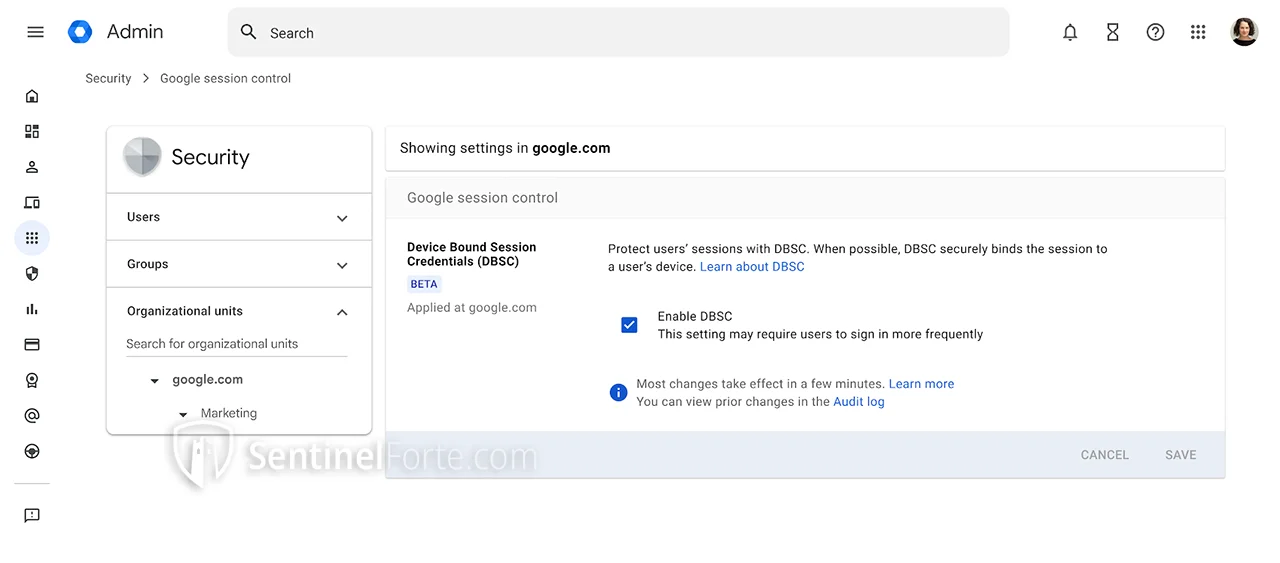In an aggressive push to tighten user authentication security and speed up vulnerability response across the ecosystem, Google has launched the open beta of Device Bound Session Credentials (DBSC) in Chrome and introduced a new Reporting Transparency initiative under its elite security research team, Project Zero. These parallel moves reflect a larger strategy by the tech giant to harden the post-login security surface, curb cookie theft, and drive faster adoption of upstream security patches—all critical needs in today’s threat-saturated digital environment.
The DBSC rollout marks a pivotal development in browser-based session protection. Built to tackle the rise of session hijacking via stolen cookies, DBSC cryptographically binds a user’s session to the specific device used during login. This approach dramatically raises the difficulty for attackers attempting to reuse pilfered cookies from a separate endpoint. Meanwhile, the new transparency protocol by Project Zero is poised to reshape the vulnerability disclosure landscape, aiming to close what researchers call the “upstream patch gap”—a rarely acknowledged delay in patch adoption that leaves users exposed, even after fixes technically exist.
At the heart of both initiatives is Google’s growing emphasis on proactive, structural improvements in security—prioritizing not just detection, but containment and coordinated remediation. In an era where threat actors are moving faster than ever, these enhancements highlight Google’s bid to secure not only its own platforms, but also the broader ecosystem that depends on them.
For users and security teams alike, the message is clear: post-authentication security is no longer optional, and transparency in patch deployment is as essential as the patches themselves.
DBSC: Locking Sessions to Devices, Not Just Logins

First introduced as a prototype in April 2024, Device Bound Session Credentials (DBSC) are now available in open beta via Chrome on Windows. According to Andy Wen, Senior Director of Product Management at Google Workspace, DBSC enhances protection after login by binding a session cookie to the specific device where authentication occurred.
“DBSC strengthens security after you are logged in and helps bind a session cookie to the device a user authenticated from,” Wen said in a recent statement.
This capability addresses a long-standing vulnerability in modern web authentication: session cookies. These small data files allow websites to recognize authenticated users across pages and visits. But when stolen—often via malware, cross-site scripting (XSS), or phishing—these cookies can be replayed on an attacker’s system to impersonate the user without needing a password.
DBSC mitigates this by ensuring that the session cookie only functions on the originating device, rendering it useless elsewhere. This represents a significant advance over traditional browser cookie protections and aligns with broader industry trends toward contextual and device-aware authentication.
In parallel, Google also announced that passkey support—a passwordless login method based on public key cryptography—is now generally available for over 11 million Workspace customers, along with enhanced administrative tools to audit passkey enrollment and enforce hardware-based restrictions.
Project Zero’s “Reporting Transparency” Aims to Shrink the Patch Gap
Alongside DBSC, Google is piloting a bold new disclosure protocol under Project Zero, its internal team tasked with identifying zero-day vulnerabilities. The program, dubbed Reporting Transparency, seeks to address a thorny issue in modern software security: the upstream patch gap.
Traditionally, security researchers operate under a disclosure window—typically 90 days—before going public with a discovered vulnerability. However, Project Zero argues that simply notifying a vendor isn’t enough if downstream software providers or hardware manufacturers take months to integrate the upstream fix and distribute it to end users.
To accelerate this process, Google will now publicly disclose the existence of reported vulnerabilities within seven days of notifying a vendor. While technical details, proof-of-concept code, and exploit data will remain under wraps, the announcement will include:
- The vendor or open-source project notified
- The affected product
- Date of the initial report
- 90-day disclosure deadline
The current pilot includes six active issues: two in Microsoft Windows, one in Dolby Unified Decoder, and three in Google BigWave, a media processing platform.
Notably, Google plans to extend the same principles of transparency to Big Sleep, an AI agent developed with DeepMind that uses machine learning to identify novel vulnerabilities. While details remain scarce, this signals a future where AI and human researchers collaborate not just in detection, but in shaping the timing and ethics of disclosure itself.
Shared Signals, Coordinated Response
Beyond cookie security and patch timelines, Google also previewed a Shared Signals Framework (SSF), entering closed beta with select enterprise partners. Built on the OpenID standard, SSF allows security systems to exchange real-time data on key events—such as logins, suspicious behaviors, or device state changes.
By creating a common language for alerts between identity providers and relying parties, SSF could unlock faster, more intelligent responses to threats across multi-vendor ecosystems. For example, if a device is flagged for compromise by one platform, another platform could instantly revoke its session—even without user action.
Google emphasizes that SSF is not limited to breach detection, but is designed for broad attribute-sharing across identity and security stacks, supporting everything from access controls to anomaly detection.
With DBSC, Reporting Transparency, and SSF, Google is reasserting its influence not just as a platform provider, but as a security infrastructure leader. These aren’t just features—they’re frameworks intended to harden the foundation of how identity, trust, and response function across the web.
As cyber threats become more sophisticated and distributed, so must the defenses. Tying sessions to devices, shrinking vulnerability exposure windows, and federating threat signals aren’t just good practices—they’re becoming essential defaults in the modern internet stack.
For users, the impact may feel invisible. But behind the scenes, efforts like DBSC and Project Zero’s transparency trial are quietly shaping a safer digital future—one where stolen cookies don’t travel, and silent bugs don’t linger.

